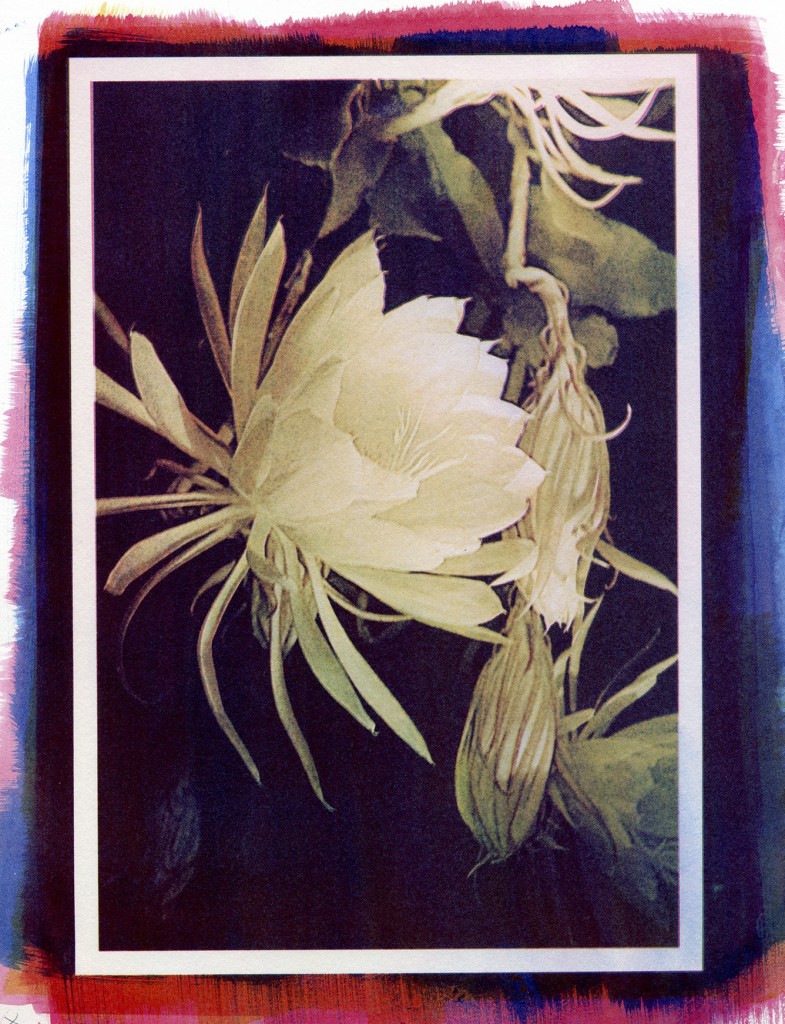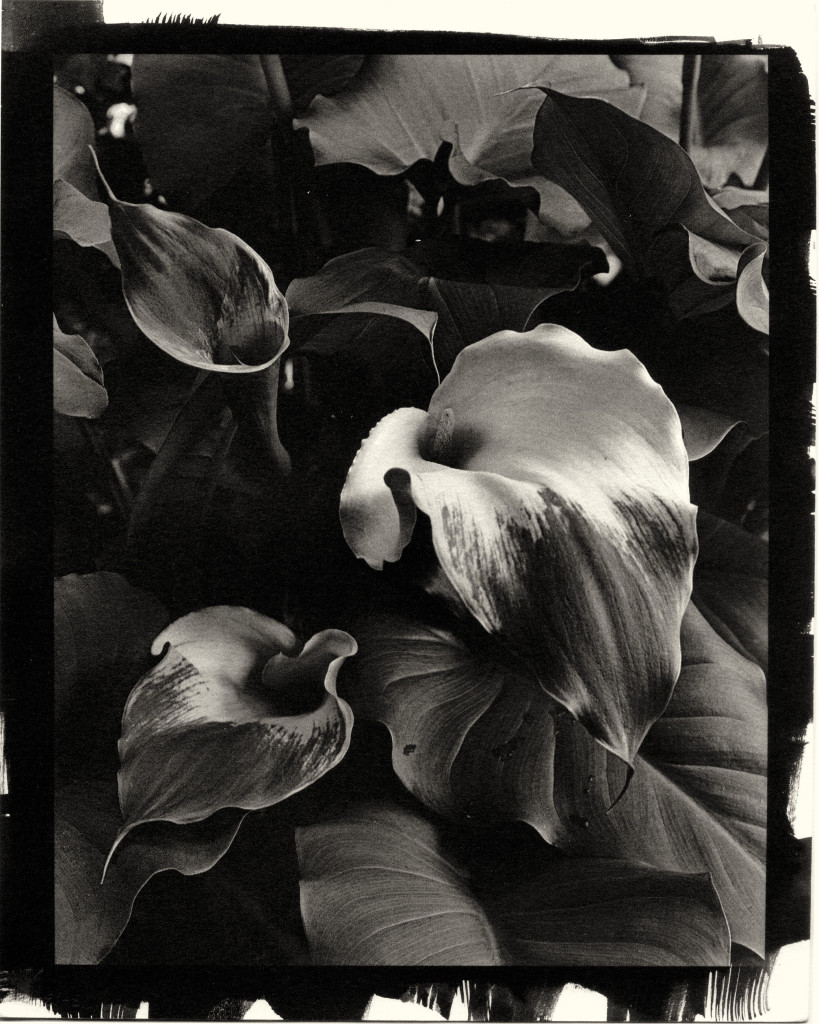Gum Prints – The Process
Of all the alternative photographic processes I’ve become familiar with, gum dichromate printing is the closest thing I’ve come to painting. The process automatically was appealing to me as a painter. Gum printing is a 19th Century process that has been brought forward to the 21st Century.
In the words of a great teacher of gum printing, Christina Z. Anderson, gum printing could be called “photographically controlled watercolors. Even though the image may resemble a color photography, it is only a fabrication of layers of hardened gum Arabic. It is in some ways closer to painting than photography.”
The process involves mixing watercolor pigments with ammonium dichromate, a photosensitive chemical that is brushed onto a watercolor paper, layered with a negative, and then exposed to UV light. To arrive at the different colors in the image, digital “separations” or negatives are produced and in turn each negative is placed over the light sensitive coated paper. Where the light is allowed to pass through the negative, the pigment is hardened. After each negative is exposed, washed in water and then dried, the next negative goes on and follows the same exposure/development process.
When the final layer is applied, exposed and developed, the image will appear as in the original photograph. Gum prints are considered the most stable and archival photographic process there is, along with carbon and platinum printing.
Platinum/Palladium – The Print Process
In a similar manner, platinum/palladium prints are produced using a negative placed on sensitized paper, exposed to a light source, developed using platinum/palladium salts on prepared paper. The outcome is a reverse of the negative, showing a wide range of values in warm tones, depending on the amount of platinum salts used, and time of light exposure.

